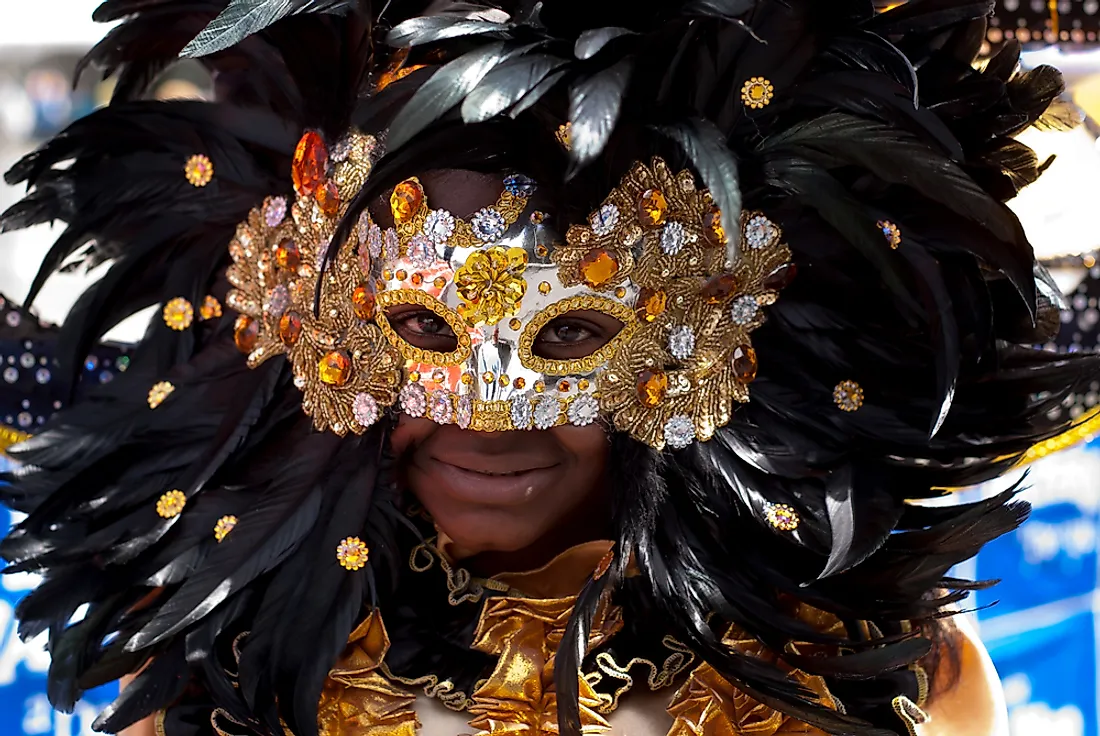
A large number of cultures have influenced the evolution of the culture of Trinidad and Tobago. Distinct cultures that have a major influence on the culture of Trinidad and Tobago are Indian, African, Portuguese, American, Spanish, Chinese and others. The country’s ties to the United Kingdom have left a huge impact on its culture, and English is widely spoken throughout the country. There is also a distinct difference between the histories and culture of Trinidad and Tobago and regional differences in the country as well. Here we inspect some of the basic aspects related to the culture of Trinidad and Tobago and the social beliefs in the country.
6. Religion in Trinidad and Tobago
Roman Catholicism, Hinduism and Islam are the main religions in Trinidad and Tobago. Anglicans, Sikhs, Jews, Buddhists, Presbyterians, Methodists, African Traditional Religion, Taoism, etc., are some of the smaller religious groups in the country. The fastest growing religious groups in Trinidad and Tobago are the Spiritual Baptist, the Yoruba/Orisha faith and two syncretic Afro-Caribbean faiths. American-style fundamentalist and evangelical churches are also gaining popularity in the country.
5. Festivals celebrated in the country
Carnival, which was introduced to Trinidad and Tobago by the French, is one of the biggest public celebrations in the island nation. Originally celebrated by the elite class, the practice spread to the free population after the abolition of slavery in 1838. Christmas is also celebrated locally when parang, a traditional style of music, is played and pasteles, fruit cake, black cake, sweet bread are eaten. The Hindu festivals of Diwali, Phagwah/Holi and Shivratri are also celebrated in the country with grandeur and glory. Muslims observe Hosay which is the local form of Shia Muslim Muharram Commemoration.
4. Cuisine of Trinidad and Tobago
There is a rich variety of cuisine in Trinidad and Tobago, and the cuisine is often a mixture of Indian, African, Arabic, European, Creole, Cajun, Spanish, Chinese and other influences. For example, curry chicken, channa (peas), aloo choka (potato preparation), roti (Indian flatbread) and white rice are examples of typical Indian dishes consumed here. Boiled chicken, red beans, homemade ginger beer, fried plantains are part of Creole cuisine. Chowmein is a popular Chinese dish in the country. Dumplings and crabs are also part of a Tobago meal. The people of the country are known to be very generous with food at religious and social festivals and events.
3. Music of Trinidad and Tobago
Calypso, an integral part of the culture of Trinidad and Tobago, is a musical style that originated in the nation. It is an Afro-Caribbean style of music that spread from the country to other parts of the Caribbean and Venezuela. Its origins are traced to the arrival of African slaves with French planters in the 18th century. Another musical style that evolved in Trinidad and Tobago is Soca which is a blend of Indian music and rhythms with calypso. Chutney and Chutney Soca are also unique musical styles in the country created from a mixture of Indian and soca styles. A fusion of Calypso and Soca in the 1970s that grew out of social unrest in the country is Rapso. A combination of Latin American and Caribbean style music gave birth to Parang in Trinidad and Tobago. Pichakaree is another form of music that incorporates the use of Indian English and Trinidadian words.
2. Theater and Literature
The Little Carib Theater was the first folk dance company to be established in Trinidad and Tobago. Trinidad and Tobago culture also includes Indian performances such as the Ram Leela. Nobel Laureates like Sir Vidia Naipaul and other famous authors like Michael Anthony and Earl Lovelace originate from the country. Calypso is treated as oral literature in the country, and some contemporary calypsonians are Mighty Sparrow, Mighty Chalkdust, Drupatee, Lord Kitchener and others. Painter Michel Jean Cazabon (1813–1888) is one of Trinidad and Tobago’s most famous artists.
1. Social beliefs in the country
Afro-Trinidadian women in Trinidad and Tobago enjoy a degree of autonomy and dominance in their families. These women are often the heads of their multi-generational families. Women have also done well in the education sector, but still earn less than men, especially in private industry. Marriage practices vary greatly in Trinidad and Tobago based on ethnicity and class. Afro-Trinidads often go through the 3 stages of non-central relationships followed by common marriages and finally formal marriage. The trend of arranged marriages in the Indian community is gradually being replaced by the growing tendency of young Indians to enter non-cohabiting relationships. Due to the presence of colonial stereotypes of blacks, Indians often resist intermarriages involving blacks. According to Indian marriage customs, the bride would live with the groom’s family after marriage, but the scenario is changing and neo-cal residence is becoming more popular.
Inheritance is primarily patrilineal in nature in most communities with the exception of the Afro-Trinidad where gender-based disputes over land inheritance are common. Education is highly valued in Trinidad and Tobago and parents often make sacrifices to allow their children to achieve higher education and white-collar jobs. Ethnic and class differences often matter in the country’s society. Sociability and companionship are encouraged, but not in business settings. Punctuality is not always expected and tardiness is common in the country. Greeting passers-by in country circles is considered good manners and is an integral part of Trinidad and Tobago culture.


